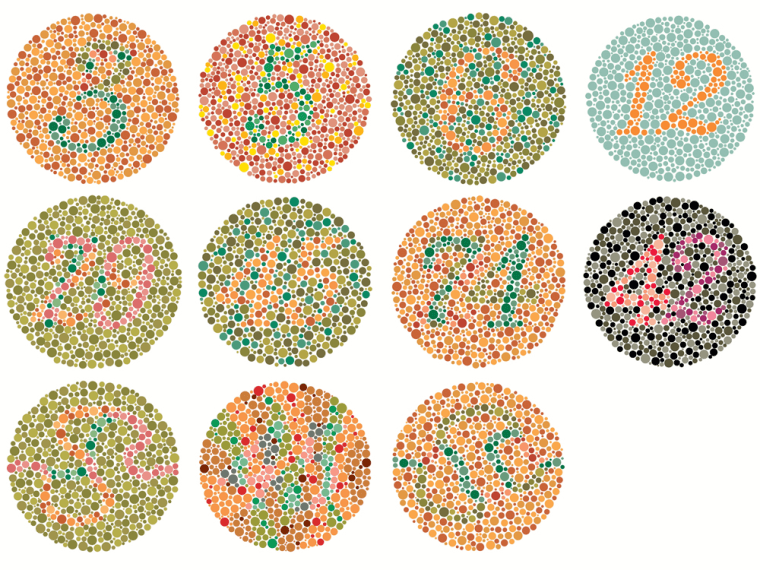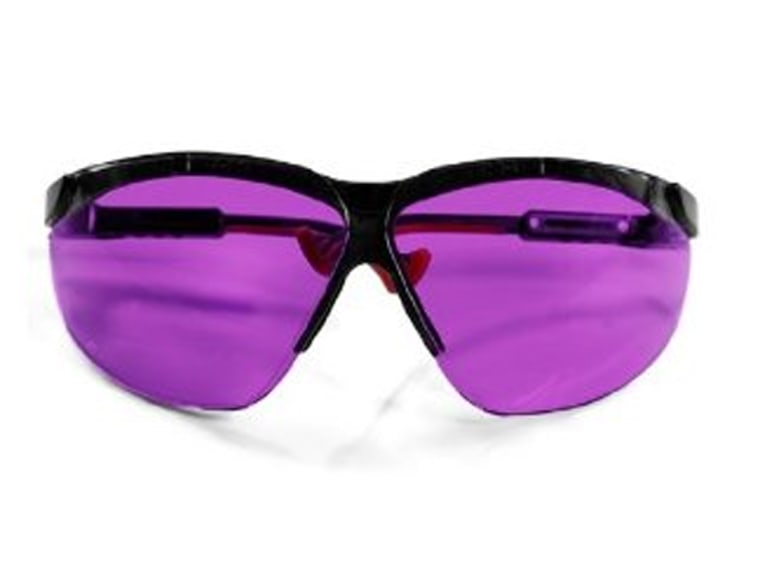
Every fall for the past 31 years, Russell Belding has watched as mobs of tourists board buses outside his office at the Department of Motor Vehicles in Montpelier, Vt.
He knows they come seeking the brilliant hues of the autumn leaves for which his state is famous. But to Belding, 53, who has a red-green color vision defect, the marvelous views are just meh.
“I’m in Vermont and every October I could never understand what they were talking about,” he says.
This year, that may change. Belding is among first fans of new glasses that were made to boost the vision of health care workers, but appear to have a side effect of correcting for the genetic condition known as color blindness.
“It made everything make sense,” says Belding, who tried a pair of the Oxy-Iso lenses made by 2A1 Labs, the Boise, Idaho, firm founded by theoretical neurobiologist Mark Changizi and his partner, Tim Barber.
Changizi and Barber developed new lenses based on Changizi’s novel theory about how human color vision evolved in the first place. For years, the leading notion was that the way humans see color developed to help people spot tempting fruits and foliage to eat. In 2006, however, Changizi and his colleagues proposed that color vision actually developed to help us discern emotional states -- rage in enemies, ardor in lovers -- by viewing changes in the blood beneath the skin.
“It’s about what underlies the spectral changes on your skin when you blush and blanch and have health changes,” Changizi explains.
Based on that concept, the new trio of glasses called O2Amps was designed to enhance two types of blood signals: the level of oxygenation in the blood and the variations in the concentration of the blood.
They were made largely with medical workers in mind, Changizi says. The glasses have been used to help health workers find shy veins, for instance, and to help doctors identify bruising that might not be apparent to the naked eye.
But when Changizi was testing the lenses last fall, a funny thing happened. Users who are among the 8 percent of men and 0.5 percent of women who have color vision deficiency started telling him that the glasses helped in that arena, too.
In those folks, mutations in certain genes affect the photopigments contained in the light-receptor cells known as cones, limiting the spectrum of color they can see.

Surprised, Changizi started seeking color blind volunteers on Twitter and elsewhere, just to see.
Daniel Bor, a fellow neuroscientist who works at the University of Sussex in England, agreed to try. He’s coped with color blindness for years, avoiding certain socks and enlisting his wife for wardrobe help. Immediately, there was a profound difference, Bor says.
“It was reasonably striking when I first put them on,” he says.
His wife’s lips suddenly looked different, “very pink,” he says. Her orange sweater became quite vibrant.
“Suddenly, colors that looked quite dead and dull were sort of screaming out to me,” he says.
It turns out that the lenses amplify the hues that are muted by red-green color vision deficiency. Color blindness, it turns out, comes in two primary varieties: red-green defects and blue-yellow defects. (Some people do have a third kind, a complete lack of color vision -- achromatopsia -- which affects about 1 in every 30,000 humans, mostly in Micronesia, the National Institutes of Health says.)
For people with red-green colorblindness, using the Oxy-Iso lenses produces a striking effect -- but there’s also a downside. The glasses may boost red-green hues, but they do it at the expense of blue-yellow hues. So while Bor may have seen his wife’s lips in a new light, he couldn’t see the yellow light on the family’s baby monitor at all.
“When I tried it more comprehensively, it became more distressing,” he says.
Ophthalmology experts say this is hardly the first time that glasses that filter light have been suggested as a cure for color blindness -- and they’re not pleased that the subject has come up again.
“It’s not new and it doesn’t work,” is the blunt assessment of Dr. Michael Marmor, a professor of ophthalmology at Stanford University and a spokesman for the American Academy of Ophthalmology.
The glasses may boost discrimination enough so that people with color deficiencies can pass the standard Ishihara color vision test for the disorder. But they don’t do anything to correct the condition itself, and it’s not clear they need to, Marmor adds.
“They can see colors,” Marmor says, noting that the hue problems range widely. “It’s not a huge issue for most people.”
There’s danger in boosting certain hues at the expense of others, so no one should use these glasses for daily vision, Marmor notes.
Changizi agrees. He never set out to market his $300 glasses to color blind consumers and he’s the first to say they shouldn’t be used for daily wear. But he’s also received orders from hundreds of hue-impaired users in recent weeks, so there must be some demand, he says.
For Bor, the Sussex neuroscientist, the best use of the O2Amp glasses might be when he’s particularly interested in appreciating colors.
“If I went to an art gallery or I went to a flower show, I would definitely take them. I’d see things obviously in a new light,” he says.
Russell Belding, the Vermont DMV worker who was first identified as color deficient at age 5, says that’s how he’d use them, too.
“I’ve sort of been walking through life dull as far as my eyes were concerned,” Belding says. “Maybe this will sort of fix that.”
Related stories: